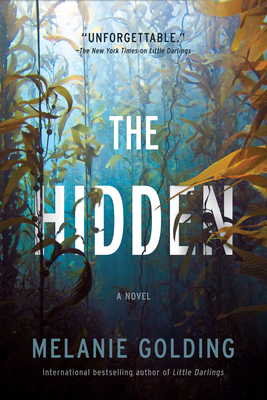When I incorporate folktales into my contemporary-set novels, it feels like I’m taking my place in an ancient tradition: re-telling old stories, updating them for a modern audience. While I’m not literally holding fort around the fireside, I like to think that creating and publishing a novel with roots in ancient folklore is the modern way of passing these tales on. Folklore itself exists everywhere, and there are many beautiful examples of novels that incorporate elements of these beguiling stories, bringing to life themes and characters that have captivated us for centuries. Selkies, which feature in my novel The Hidden, are shape-shifters: seals in the sea, human on land. More than that, having read many versions of folktales containing selkies while researching the book, I feel they are metaphors for female experience, when they are held captive, made to serve a man and bear his children. Thankfully, the selkie tends to get the last laugh, and the man his comeuppance, albeit several years from the time she is taken. When she eventually finds her lost sealskin she’s off, quick as a flash, kissing the children and swimming away, never to return.
I love the idea that much of folklore is based on universal human stories that are still true today. Selkies may be mystical creatures but they are also women treated badly by men, then judged for their response by wider society. Because of this universality, as well as the compelling magical element, there are many modern novels that make use of selkie folklore, which in several ways shares roots with the folklore of mermaids. I’ve picked out a few that spoke to me. I hope many more readers will discover these sea-faring, shape-shifting, magic-realist tales.

In The Sealwoman’s Gift by Sally Magnussun the gift of the title is a story, given during a hellish voyage following the abduction of hundreds of Icelandic people from their homeland in the seventeenth century. That the story is based in truth tantalises, in the same way one wonders about hidden truths in folktales.

Orkney, by Amy Sackville tells of a university lecturer who falls in love with one of his students, an ethereal, white haired creature, forty years his junior. They honeymoon in Orkney, where selkie legends imbue his obsessional longing for her with increasing desperation.
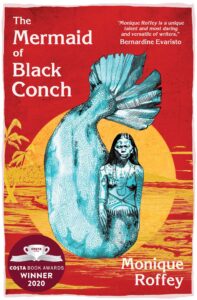
The Mermaid of Black Conch by Monique Roffey is the story of a half-fish half-woman, captured and strung up by a group of glory-seeking sailors. After she is rescued by David, her transformation begins, and it is at once devastating, beautiful, and full of human truth.
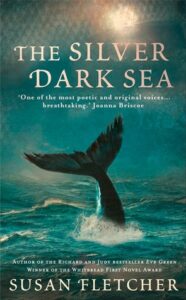
In The Silver Dark Sea, Susan Fletcher plays on the idea that stories can be interpreted in more than one way. Like my own novels, Fletcher’s mythical hymn to the stories and folklore of a small island community takes account of those who believe, and those who do not, and yet manages to enchant all.
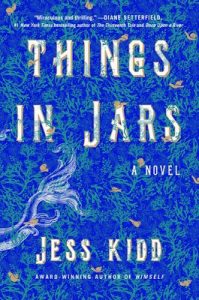
Things in Jars by Jess Kidd. Set in the Victorian era of spectacle and sideshow, the story follows lady detective Bridie Devine as she sets out to find a mysterious child who has disappeared. Christabel is rumoured to be a Merrow, a kind of mermaid. Assisting her in her investigation is a dead man, Ruby Doyle, who may or may not be a hallucination brought on by whatever it is that Bridie is constantly smoking. This novel is charming, entertaining, and gripping, with magic, folklore and bags of personality.

Deep Water by Lu Hersey. A Myslexia Prize-winning novel for older teenagers, Deep Water contains an engrossing retelling of Selkie lore. Teenager Danni needs to find her mum, who has disappeared in unknown circumstances. She heads for the small Cornish village that was her mother’s hometown, and discovers secrets about her mother and her family that threaten to blow her world apart. What follows is a deeply enthralling adventure incorporating elements of fantasy into a satisfyingly realistic, emotional story. The coastline and the sea itself play important stylistic parts, to great effect.
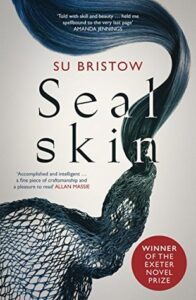
Sealskin by Su Bristow. Another novel deeply rooted in the communities living near the sea, Bristow’s Exeter Novel Prize-winning novel could be seen as the most straightforward retelling of Selkie folklore in this selection. Like many traditional Selkie tales, the novel begins with a shocking crime, the rape of Mhairi, so named by the repentant rapist himself, Donald. The novel shows how the mute selkie, who cannot return to the sea without the sealskin that has been stolen from her, apparently comes to love the man who has imprisoned her. Highly triggering for some readers, Sealskin remains true to the folklore it draws from, examining how relationships between men and women may have developed, historically, in such a situation.

The Mermaid and Mrs Hancock by Imogen Hermes Gower. Shortlisted for the Women’s Prize for Fiction, the novel is set in the late 1700’s and features a colourful cast of characters. Early in the novel the widowed Jonah Hancock is dismayed to discover a ship’s captain he employs has sold the ship for a mermaid. It soon becomes clear, however, that the high price paid for this creature is worth it, when all talk among those that matter is of the mysterious catch. Jonah must find yet another mermaid, however, in order to procure his bride. Beautifully written and full of bawdy detail true to the time, the novel is elegant and wonderful, in the truest sense of the word.
***


